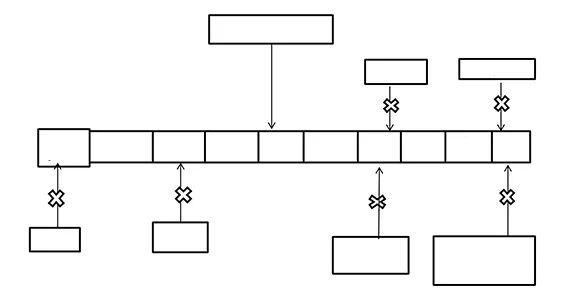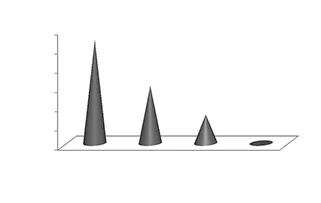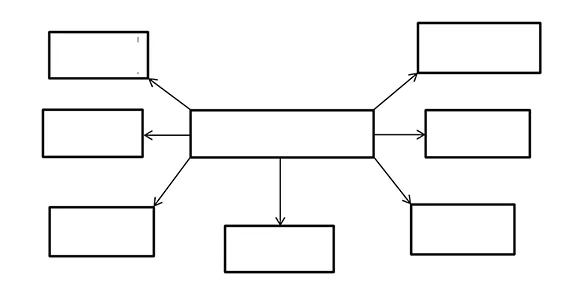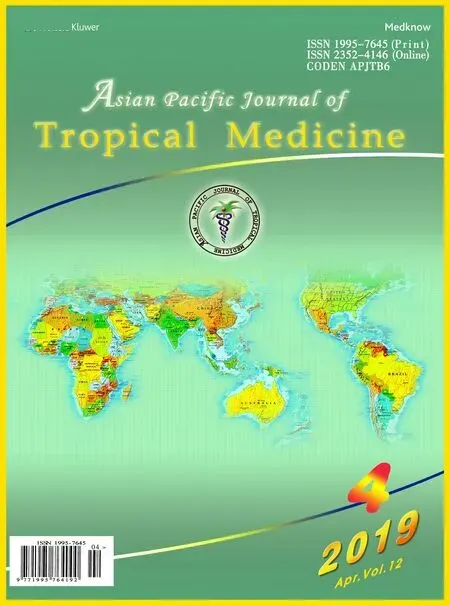Herbal remedies, vaccines and drugs for dengue fever: Emerging prevention and treatment strategies
Rinku Rozera, Surajpal Verma✉, Ravi Kumar, Anzarul Haque, Anshul Attri
1School of Pharmaceutical Sciences, Lovely Professional University, Phagwara-144411, Punjab, India
2College of Pharmacy, Prince Sattam Bin Abdul Aziz University, Kharj, Ksa, Kingdom of Saudi Arabia
Keywords:Dengue fever Plant extracts Vaccines and Antiviral agents
ABSTRACTDengue fever is a disease that is caused by five dengue virus (DENV) serotypes. It is endemic in more than 128 countries. Millions of people are affected by this disease. But still, there is no specific treatment available till now to combat it. Some of the preventive measures using plant extracts showed certain promising ovicidal activity against Aedes aegypti. There are some vaccines as preventive measure and antiviral agents to cure the dengue fever, which are under clinical trials but their results have not been reported or approved yet. Dengvaxia is the only licensed vaccine to prevent dengue fever in some South American countries, but it is not approved by other regulatory authorities worldwide. Scientific research has been going on to find a permanent cure for dengue fever, but till now, no successful invention has been done. There are some general treatments for dengue patient by employing analgesics and fluid replacement; however, specific treatment is needed to overcome the lethal effect of dengue fever. Since this disease has affected millions of people and not much invention has been made in this field; therefore, advancement in dengue therapy is required for the safety and well-being of dengue patients. Herein we collectively describe the different chemotherapeutics agents,alternative methods like vaccines and antiviral agents to prevent and cure this lethal disease.Furthermore, the future perspective for the treatment of dengue is discussed in this review.
1. Introduction
Dengue fever is an infectious disease vectored by Aedes aegypti(Ae.aegypti) and Aedes albopictus mosquitoes. There are four serotypes of dengue virus named as DENV1, DENV2, DENV3 and DENV4[1]. It is an arthropod-borne flavivirus belongs to family Flaviviridae. The main symptoms of the disease caused by this virus are hemorrhagic fever and shock. It is very difficult to predict the severity of this infection as a physician having very less surety about whether the patient is at fatal risk or minor risk.Many clinical trials are underway nowadays to eradicate the deadly dengue fever which includes strategies like treatment using antiviral agents, host modulators and ribonucleic acid interference[2]. In subtropical and tropical areas about 50 to 100 million population is affected by dengue fever every year[3]. According to the World Health Organization (WHO) guideline 1997, dengue patients can be categorized into three categories including dengue hemorrhagic fever, dengue fever, and dengue shock syndrome. As per WHO guideline 2009, dengue patients can be further categorized on the severity basis that includes severe dengue patients, dengue patients with few warning signs and dengue patients with no warning signs[4]. The main characterized symptoms for this infection are the onset of headache, myalgia, arthralgia, high fever, retro-orbital pain and also hemorrhagic manifestations. Dengue virus can also cause other severe problems like organ failure, myocardial impairment,rhabdomyolysis, hepatitis, maculopathy and neurological problems[2]. Dengue hemorrhagic fever which is most severe out of these three categories mainly occurs in 5% of total dengue patients[5]. It generally lasts for 2-7 days and then it is followed by severe joint and muscle pain[6]. This fever is generally widespread in South-East Asia, Africa, western Pacific and South American countries. From the duration of 1996 to 2005, dengue cases reported by WHO has been increased from 0.4 to 1.3 million and in 2015 it has been reached up to 3.2 million. But still, there is a large number of dengue cases which has been not reported to WHO or other national health systems[4].
2. Mechanism of action of different therapies on dengue virus
All dengue serotype are categorized based upon the antigen present on their surface having 60%-70% similarity in their sequence[7]. Dengue virus which is single-stranded RNA replicates on endoplasmic reticulum membrane with aid of non-structural protein of RNA. NS5 is the largest non-structural among them all[8].Development of a few vaccines base upon live attenuated virus has been done but the major problems are the prolong dose schedule, the reactivity of vaccine and its seroconversion rate[9]. The mechanism of actions of different therapies has been represented in Figure 1.
3. Preventive measures
Preventing dengue, a mosquito-borne disease, is as simple as preventing mosquito bites. For this we generally use repellent on our skin while indoors or out, use nets and air-condition rooms.But nowadays, various plant extracts can be used to combat the population of Ae. aegypti. In this section we are trying to discuss some of them which have shown a good ovicidal activity. Also, we tried to elaborate the present status of research and development of some vaccines against all DENV strain in this section.
3.1. Plant extracts with ovicidal activity against Ae. aegypti
Recently plant products like essential oils, plant extracts, and pure metabolites are proposed to find the potential ovicidal properties against mosquito vector. The five extracts including herbal extracts had some preclinical/clinical evidence; hence, only these extracts included. It has been revealed that 0.1 ppm of the herbal extract prepared by using oil of neem (Azadirachta indica) and karanj(Pongamia glabra) showed 100% egg mortality against Aedes mosquito. While protolimonoid nilocitin present in the hexane extract of leaves of Limonia acidissima at 2 ppm concentration exhibited 83.2% ovicidal activity as per the study carried out by Benelli in 2015[11].

Figure 1. Mechanism of action of some therapies on dengue virus[2,10].*NS1- Non-structural protein 1(involved in RNA replication); NS2A- Non-structural protein 2A (RNA replication); prM- Precursor membrane; NS2B- Non-structural protein 2B (a co-factor for NS3); NS3- Non-structural protein 3 (Serine protease); E-Eenvelop protein; NS4- Non-structural protein 4 (For replication purpose); NS5- Non-structural protein 5 (RNA-dependent RNA polymerase).
3.1.1. Ageratum houstonianum
Ageratum houstonianum belonging to family Asteraceae is abundantly available in South America, India, Central America,and Europe. Three extracts containing hexane, ethyl acetate, and methanol from the leaves of this plant were studied by Tennyson et.al. in 2015. The three types of extracts at different concentrations ranging from 2.5 to 20 mg/L exhibited very good ovicidal activities[12].
3.1.2. Albizia lebbeck
The extraction of Albizia lebbeck was done in Soxhlet apparatus by using different chemicals like chloroform, ethyl acetate, benzene,hexane, and methanol individually. The ovicidal effects of all the extracts were checked by observing the egg mortality or hatchability of egg. If less hatching of eggs is there, it means the given plant extracts have more ovicidal properties. No hatching of the egg means 100% egg mortality. Most of the concentrations were found to be effective to kill the eggs of Aedes mosquito[13].
3.1.3. Andrographis paniculata
Andrographis paniculata belongs to family Acanthaceae. It is habited to China, Europe, and southern Asia. Andrographis paniculata has anti-inflammatory, anti-diabetes, antidiarrheal,antiviral, hepatoprotective and anticancer properties. Diterpenoids and flavonoids are the main chemical constituents of Andrographis paniculata. Percentages of eggs hatchability for different extracts at a concentration of 50, 100, 150, 200, 250 and 300 ppms were studied.The hexane extract represented the best result with comparisons to other extracts[14].
3.1.4. Aristolochia bracteata
Aristolochia bracteata belongs to family Aristolochiaceae and is called a worm killer. It is distributed mainly in India. It is used for a gastric stimulant, lung inflammation, snake bite and insecticidal properties. Ovicidal activity of Aristolochia bracteata plant extracts in methanol were checked. The prominent ovicidal activity was observed by this extract[15].
3.1.5. Artemisia annua
Artemisia annua was used in old times to treat fever and it belongs to the family Asteraceae. Other than that, it has some additional properties like antimalarial, antibacterial and anti-inflammatory activity. Artemisia annua plant extract at concentrations 50, 200, 300 and 500 ppm showed (86.25±2.13), (83.50±4.63), (75.62±4.48) and(48.84±4.08) percentage hatchability respectively[16].
3.2. Vaccines
Vaccines are a principal preventive approach for combating infectious diseases. To prevent dengue fever, different kinds of vaccines have been developed but till now there is only one vaccine which is licensed to market in some specific countries of the world where dengue is endemic (Table 1). Different research institutes are trying to develop vaccines which can be used safely and with efficacy against all DENV strains[17].
3.2.1. Dengvaxia
Dengvaxia is a tetravalent chimeric vaccine which was formulated by eliminating the precursor membrane and envelop protein of yellow fever 17D strain of all dengue serotypes. Sanofi Pasteur synthesized the tetravalent dengue vaccine named as Dengvaxia which has a license to market of more than ten countries that havemore cases of dengue including Mexico, Philippines, El Salvador,Paraguay, Thailand, Singapore, Brazil, Costa Rica, Guatemala, Peru,and Indonesia[17]. WHO has not qualified the use of this vaccine in general and also it was observed to have low efficacy against serotype 1 and 2. It cannot protect against serotype 5 of DENV which has been discovered in 2013. This vaccine is given in a threedose schedule at an interval of six months to human beings who live in dengue-endemic areas with the age of 9-45 years[17].

Table 1. Dengue vaccines under clinical trials
3.2.2. Tetravalent dengue vaccine (TDV)
TDV contains DENV-2 strain followed by 3 chimeric viruses which have precursor membrane and envelope protein of DENV-1, 3 and 4 strains and then these are genetically combined into attenuated TDV 2 genome backbone. Regardless of patient exposed to dengue previously, TDV induces a humoral and cellular immune response in adult and children. It exhibited neutralizing antibody response to all type of DENV serotypes. TDV is also effective against wild type dengue viruses in mouse and non-human primate animal model.Humoral immunogenicity was more against DENV-2 followed by DENV 1, 3 and 4 respectively. TDV has shown acceptable tolerability and safety profile in adult and children[18].
As per ClinicalTrials.gov, there are 109 ongoing clinical trials worldwide on different vaccines to find a promising vaccine for the treatment of dengue fever[24].
The current status of vaccines present in different phases of clinical trials are represented in Figure 2.

Figure 2. Numbers of vaccines in different phases of clinical trials worldwide[24].
4. Treatments
There is no specific antiviral treatment available in the market yet.Generally, treatment includes the mechanism of controlling fever and pain with paracetamol rather than aspirin (aspirin may promote bleeding), and increasing fluid intake. But some of the antiviral agents and herbal remedies which shown better activity against the dengue fever has been described here.
4.1. Antiviral agents
Antiviral agents are under development for the treatment of dengue fever. These agents generally act on RNA genome of dengue virus.The genome of the dengue virus is single-stranded RNA which has

Figure 3. Classification of antiviral agents based upon their mechanisms of action[2].
three structural proteins and five non-structural proteins. Antiviral agents are under development on the basis of the protein they act.Some antiviral agents act on proteins like NS5, capsid, and NS3, so on this basis antiviral agents are classified as follows[2](Figure 3).
Celgosivir and Balapavir are antiviral agents which are under phaseⅠclinical trials as NCT02569827 & NCT01096576 respectively[10,25].
Sofosbuvir is a drug which is used for hepatitis but research has been going on to check its efficacy for the treatment of dengue fever by using in silico and in vitro methods. Evaluation of GS-461203 which is an active metabolite of sofosbuvir was done by molecular docking analyses. It acts on non-structural protein NS5 which serves as RNA -dependent RNA polymerase (RdRp) for replication of dengue virus. Binding interaction analysis was done to compare binding conformation of GS-461203 with NS5 to that of Hepatitis C virus.
Antiviral effect of sofosbuvir has been shown in human liver hepatocellular carcinoma cell lines (HepG2 cell lines) which was infected by dengue virus serotype Ⅱ but was ineffective in Vero cell lines which were obtained from African green monkey kidney epithelial cell line[26].
4.2. Herbal remedies
Various formulations based on plants have also been tried and used by traditional healers and simultaneously been scientifically validated and documented by modern researchers.
4.2.1. Carica papaya(C. papaya)
Efficacy of C. papaya has been reported against the dengue virus.Leaf extract of C. papaya was prepared and two spoonful of leaf extract was given to five dengue patients orally, three times per day at an interval of 6 h. After 24 h of treatment, it was found that there was an increase in the number of platelets. To check the potential of this extract clinical trial was performed. It was randomized, placebocontrolled, double-blind clinical trial and it was executed in 300 patients at 5 different centers. The intervention group was given a tablet of C. papaya leaf extract of dose 1 100 mg three times in a day for five days and control group was given placebo of same dose and same frequency as that of the intervention group. It was reported that the intervention group recovered faster from 2nd day onward compared with the control group. The study represented that there was a significant increase in platelet and WBC count. The study further revealed that the effect was observed due to the expression of arachidonate 12-lipooxygenase gene and platelet-activating factor receptor gene[27].
4.2.2. Azadirachta indica
As per the in vitro and in vivo study conducted by Parida et al, the leaves extract of Azadirachta indica showed positive effect against dengue virus specially for serotype II[28].
5. Conclusion
Literature reviewed suggested that till now no chemotherapeutic agent is approved by the regulatory authority for the treatment of dengue fever. But as per the recent research it can be controlled by use of a dengvaxia vaccine which is approved in some countries.There are also some prophylactic measures which can be used for the vector control to reduce these blood-feeding arthropods and to reduce the transmission of dengue fever. Unfortunately, these control methods have only shown limited success in controlling the vector population. A good efficacy of fresh juice from the leaves of Carica papaya has been reported against the dengue virus. So, it can be used as a promising therapy to treat this disease in the future.Still it would require a proper standardization and well established pharmacokinetic and pharmacodynamic studies for this extract or juice. Further research is required to develop a dengue vaccine or antiviral agent that will be helpful to eradicate this disease.
Conflict of interest statement
The authors declare there is no conflict of interest regarding this publication.
 Asian Pacific Journal of Tropical Medicine2019年4期
Asian Pacific Journal of Tropical Medicine2019年4期
- Asian Pacific Journal of Tropical Medicine的其它文章
- Disseminated nocardiosis due to Nocardia otitidiscaviarum: A case report and literature review
- Latent tuberculosis infection among medical students in Malaysia
- Misinformation on salt water use among Nigerians during 2014 Ebola outbreak and the role of social media
- Wild chive oil is an extremely effective larvicide against malaria mosquito vector Anopheles stephensi
- Characterization of the salivary microbiome in healthy Thai children
- Morphometric discrimination between females of two isomorphic sand fly species, Phlebotomus caucasicus and Phlebotomus mongolensis (Diptera:Phlebotominae) in endemic and non-endemic foci of zoonotic cutaneous leishmaniasis in Iran
